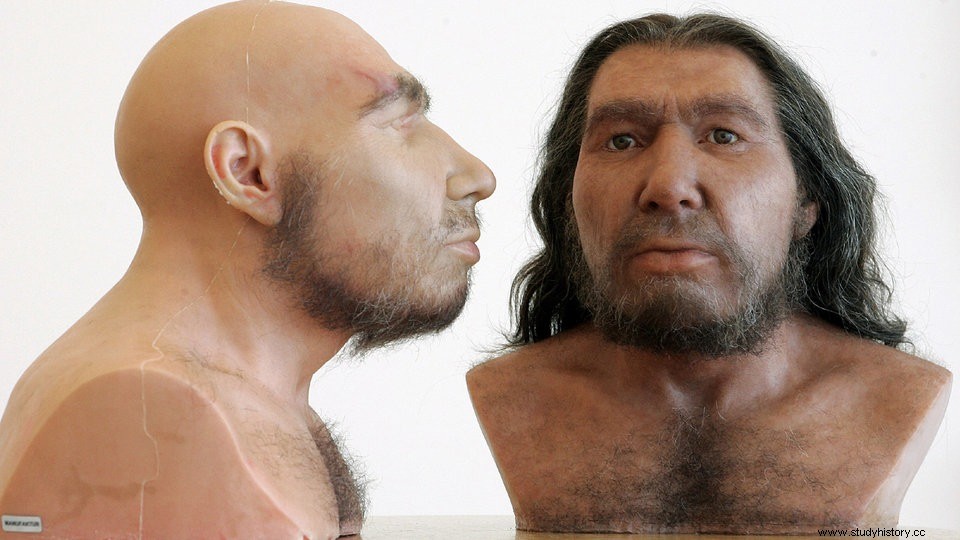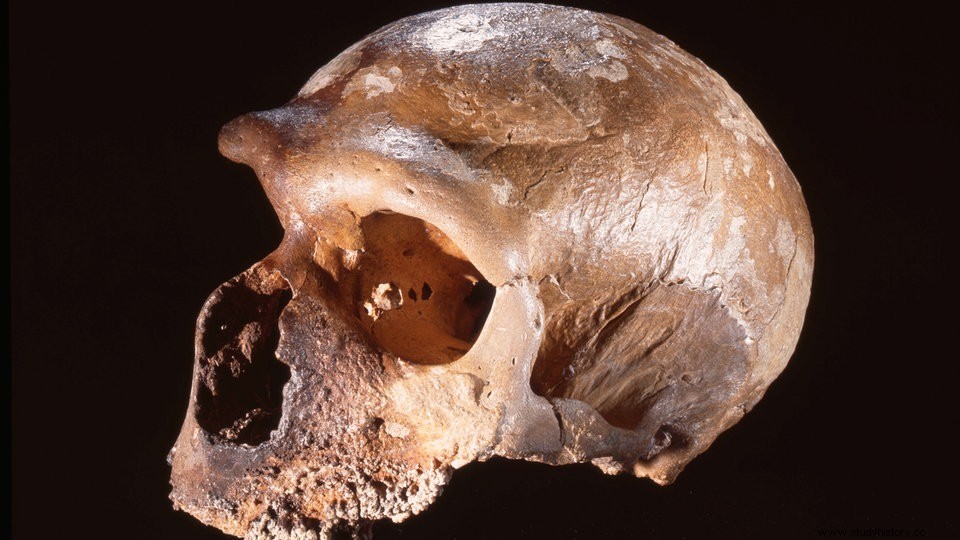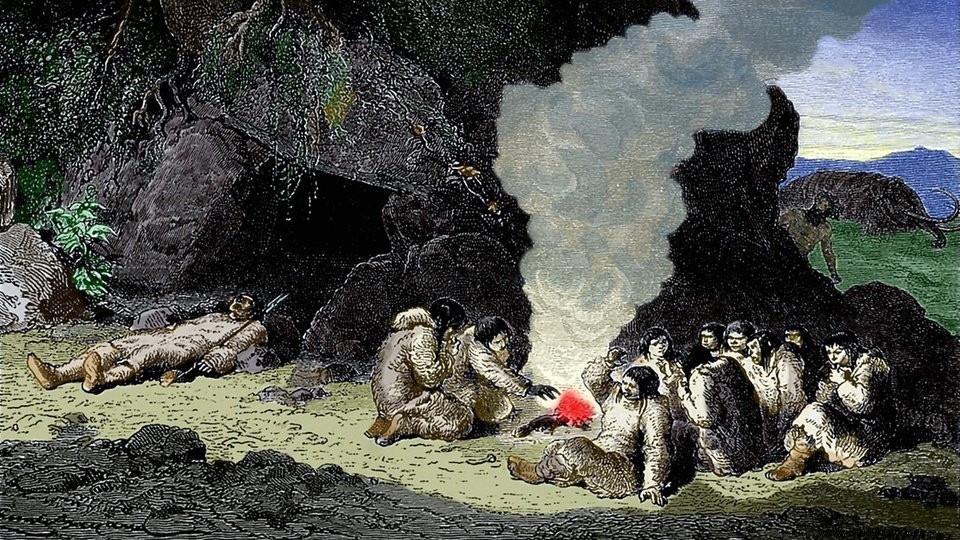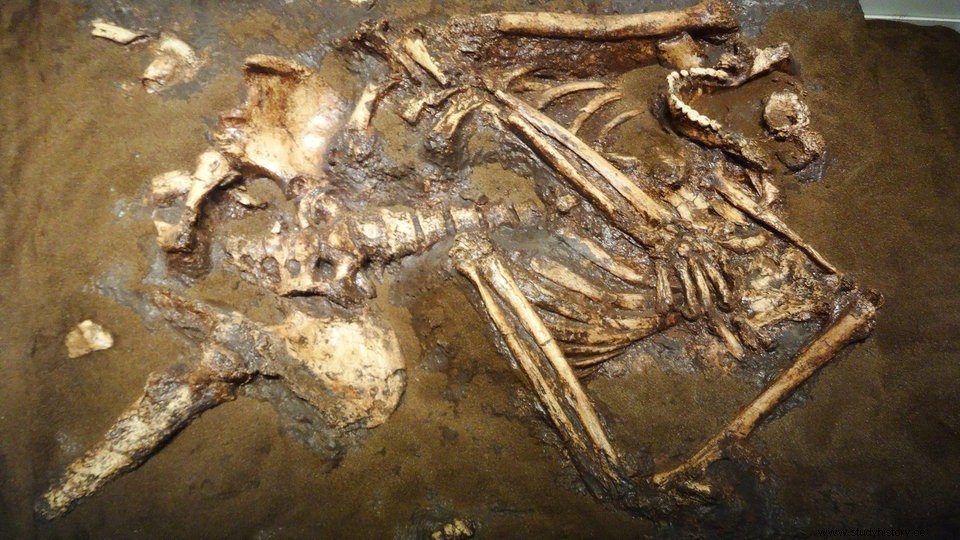The Neanderthals ruled Europe for 250,000 years. They adapted to the harsh living conditions of the Ice Age. But a good 30,000 years ago, their trace was lost.
Homo neanderthalensis – the Neanderthal
The fact that Neanderthals existed at all only came to light 150 years ago, when a skull of prehistoric man was found near Mettmann in the Neandertal. Since then we have been puzzled:Who was our distant relative?
Under the critical gaze of scientists, Neanderthals are sometimes poorly off. Researchers have long argued about the place of Homo neanderthalensis in the modern human family tree.
Were the Neanderthals a regional population group of Homo sapiens, i.e. an intermediate stage in the development of modern humans? This is how the so-called multi-regionalists see it.
Or did the Neanderthals form an independent group that ended in an evolutionary dead end, as the supporters of the "Out of Africa" theory suspect? Researchers are trying to solve this riddle with genetic analyses.
For a long time only one thing was certain:Neanderthals and modern humans had the same ancestor, Homo erectus. The "Heidelberg people" developed from it around 800,000 years ago and finally the first Neanderthals around 300,000 years ago.

Two replicas of a Neanderthal
Neanderthal fossils have been excavated at more than 80 sites in many European countries and in the Middle East. These prehistoric people lived in an area from southern Spain to Uzbekistan and from northern Germany to Israel.
A team led by geneticist Svante Pääbo made new discoveries in 2010. After ten years of work, the researchers had succeeded in decoding the genetic material (genome) of Neanderthals. Lo and behold:Neanderthals inherited one to four percent of our DNA.
Neanderthals and modern humans must have had sex and produced offspring while living together in Europe and the Middle East. Pääbo's realization:We Europeans still carry a piece of Neanderthals within us today.
 Start video, cancel with escape
Start video, cancel with escape Did Neanderthals and Homo sapiens have sex?
00:54 min. Available until 12/30/2099.
Climatic conditions and anatomy
Neanderthals were ideally adapted to the Ice Age living conditions. However, the term "Ice Age" has to be viewed differently:During the approximately 250,000 years of Neanderthal existence, it was not always freezing cold in Europe. There were also warm periods, the so-called interglacial periods, which lasted 10,000 to 15,000 years.
The Neanderthals had to cope with extreme climatic changes. Anatomically, the Neanderthals are therefore very different from modern humans.
Modern humans, Homo sapiens, who evolved at the same time in the warm climate of Africa, were taller and slimmer than primeval Europeans. Bone finds show that the Neanderthal was short and stocky, averaging about 160 centimeters tall. But he was quite heavy with 60 to 80 kilograms.
Neanderthals were muscular and had a strong bone structure. Her skull was particularly striking:it was elongated and flat. On average, Neanderthals' brains were larger than ours.
The extended back of the head suggests that his sense of hearing was better and he might also have better vision, especially at dusk. This is also indicated by the large eye sockets. The flat forehead with the mighty bulges above the eyes, the powerful chewing apparatus and the receding chin are also typical of the Neanderthals.
He also had very large sinuses, which made the cold climate a bit more bearable. In them, the cool air was preheated and humidified before it reached the lungs.

Neanderthal skull
Neanderthal way of life
Were the Neanderases club-wielding ape-men, brutal, dull and primitive? no This image is now outdated. Neanderthals were far more sophisticated than previously thought.
They made fire and were skilled big game hunters:woolly rhinos, mammoths and reindeer were among their prey. They didn't need clubs:Neanderthals were skilled toolmakers who made spears with stone tips especially for hunting. Some stone tools had blades as sharp as a scalpel.
Her life was dangerous. Almost all bones found show injuries. In Iraq, paleontologists found the remains of a crippled Neanderthal man. He had suffered multiple broken bones. He must have been blind in one eye due to a skull injury on his left side, and he was also missing his right forearm.
Despite this, he lived to be around 35 to 40 years old, suggesting that he was cared for by his loved ones. Neanderthals were socially organized. The finding of a hyoid bone in the Kebara Cave in Israel is an indication that they could also speak. However, we can no longer reconstruct whether they really spoke and what this language might have sounded like.
Some researchers also believe that they had a taste for art and music. However, finds from the time of the last Neanderthals have always been attributed to Homo sapiens, who pushed their way to Europe around 35,000 years ago. It's difficult to prove whether you're right.

Neanderthals mastered fire
Dealing with the dead
According to studies, the average life expectancy of Neanderthals was around 30 years. This left the reproductive Neanderthals with little time to produce enough offspring to ensure the survival of their clan. Presumably only every second Neanderthal child lived to be more than five years old.
Apparently, some of the Neanderthals buried their dead. Graves and small cemeteries can be found widely scattered in the habitat of the Neanderthals between France and Israel.
However, the burials do not necessarily point to ideas about the afterlife. Hardly any grave goods have been found. Only in the Shanidar Cave in Iraq can a conspicuous amount of pollen be found in the immediate vicinity of the bones. So flowers may have been quite common at burials.
In addition, the custom of separating the flesh from the body of the dead and breaking open the bones was probably widespread among the Neanderthals. Some human remains were broken open like animal bones.
What initially sounds like cruel cannibalism is interpreted differently by many scientists:they suspect a religious rite behind this practice. In particular, the interfaces on the skull are an indication of this thesis.
The fact that the heads of the dead were mainly processed does not indicate cannibalism, since there is little meat on them. The practice is therefore more indicative of ritual multiple burials. Individual bones are exhumed, freed from flesh and stored separately.

Neanderthal tomb in Israel's Kebara Cave
